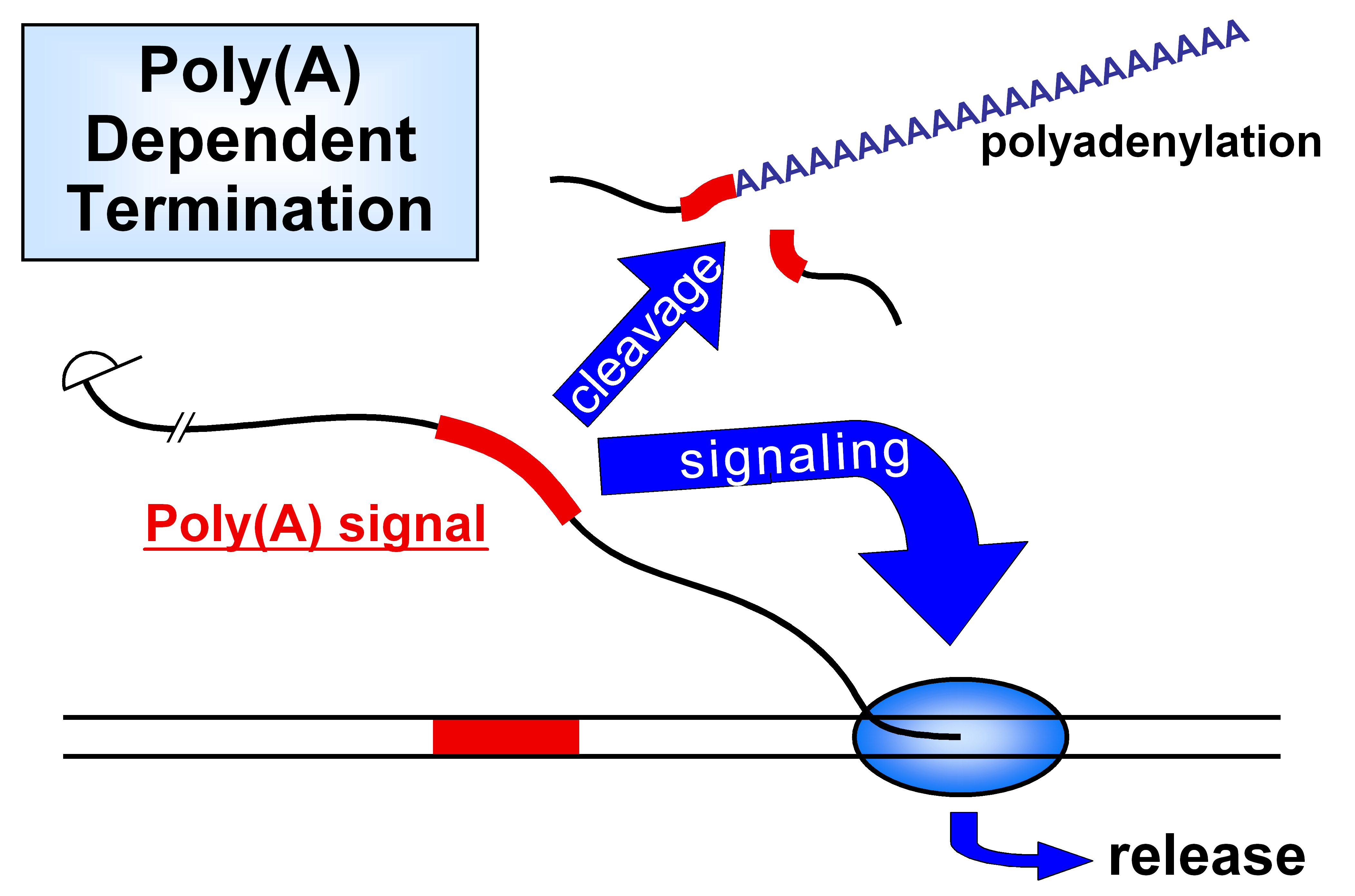
PolyA-dependent termination is the process whereby a poly(A) signal directs the polymerase, that just transcribed it, to stop transcription and release itself from the DNA. Thus a poly(A) signal engages in two functions: 1) The familiar function of orchestrating its own cleavage & polyadenylation, and 2) A parallel signaling function by which it communicates with the polymerase. A third function, in which the poly(A) signal enhances splicing of the last intron, is not illustrated here.
Poly(A)-dependent termination was first discovered in a patient from Saudi Arabia who was suffering from α-thalassemia. This patient was homozygous for a point mutation in the poly(A) signal of one of the two α-globin genes on chromosome 16. Inactivating just one of these two genes would normally be expected to result in only mild symptoms. However, this patient suffered from a fairly serious case of hemolytic anemia. This led to the discovery that mutations in the poly(A) signal inactivate not only cleavage but also signaling. As a result, the polymerases from the mutated gene fail to terminate and plough into the normal gene downstream, inactivating it by promoter occlusion.